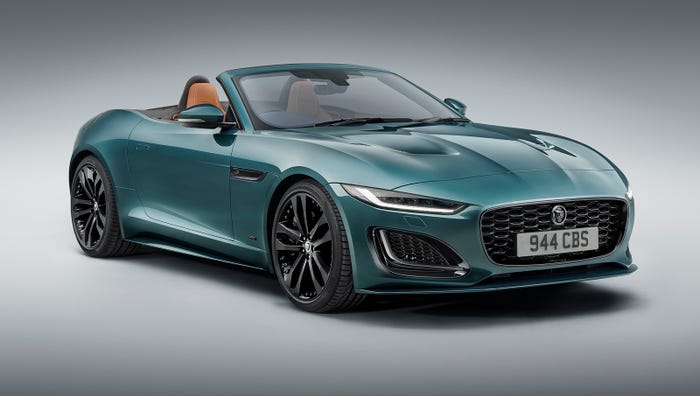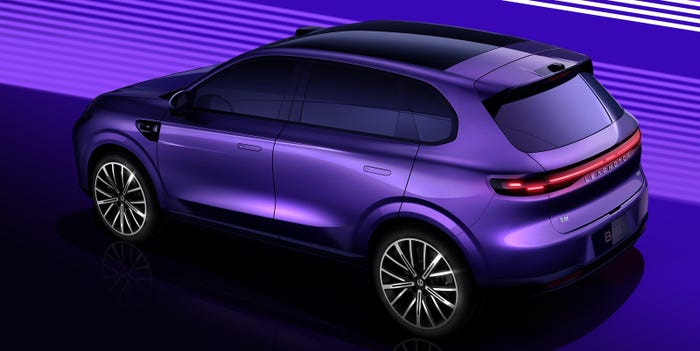Lincoln MKC a Step in Right Direction
The all-new ’15 Lincoln MKC represents a strong entry in rapidly expanding small CUV luxury segment.

SANTA BARBARA, CA – The all-new ’15 MKC CUV represents the first legitimate step towards relevancy in the U.S. luxury market for the Lincoln brand. The vehicle is stylish, has decent driving characteristics and is comfortable and quiet, all of which should make it competitive in the luxury-CUV segment.
Lincoln is chastised for offering nothing more than rebadged and gussied-up Fords, and in many cases the criticism is valid. With the MKC, engineers, product planners and designers were on a mission to separate the new model as much as possible from its Ford Escape platform-mate, and they largely succeed in that task.
Even the architecture has been modified. For the MKC, the global C1 platform, which also underpins the Focus C-car, was widened 0.8 ins. (22 mm) and the roofline lowered. The result is a more aggressive stance that sets the Lincoln apart from the Escape as well as enhances handling.
The sheetmetal shares nothing with the Escape, which should silence brand naysayers. The MKC boasts a sleek, sculpted body with clean, flowing lines. The one problem: the split-wing grille adorns the front.
Lincoln’s signature grille is toned down a bit for the MKC, but it still detracts from the CUV’s otherwise handsome looks. It’s time for that classic grille to be left in the past where it belongs.
High-intensity-discharge headlamps blend nicely, however, while full-width LED taillights adorn the rear. The lights are a perfect balance of form and function, tying together the front and rear fascia while providing superior illumination. That said, high-tech lights now are standard fare for the luxury segment and do little as a selling point.
Designers were given carte blanche in crafting the interior, and the wraparound liftgate is evidence of that freedom. Unlike traditional hatches that split the taillights, the wraparound liftgate extends all the way to the sides of the vehicle, providing a clean look and a wider opening. Lincoln designers pushed for the unique treatment despite the expensive hydroforming process used to create it.
Like the Escape’s liftgate, the MKC’s can be opened with a kicking motion under the rear bumper.
The new Lincoln comes standard with a 2.0L direct-injected turbocharged EcoBoost 4-cyl. engine making 240 hp and 270 lb.-ft. (366 Nm) of torque. The base mill is adequate in most cases, but struggles a bit on steeper inclines. The better bet is the new 2.3L EcoBoost 4-cyl, which pumps out 285 hp and 305 lb.-ft. (414 Nm) of twist.
The 2.3L, shared with the upcoming ’15 Mustang pony car, offers plenty of power and stacks up well against top competitors, including the Audi Q5’s 3.0L V-6 that makes 272 hp and 295 lb.-ft. (413 Nm) of torque.
Both MKC engines are mated to a standard 6-speed automatic transmission, which is serviceable but trails the competition, now moving to more advanced, multispeed gearboxes.
Handling on Soft Side
Where the MKC struggles a bit is in the handling department. While adequate, it doesn’t stack up to the sporty driving characteristics offered by the Q5 and BMW X3. The ride is smooth, particularly in models equipped with Lincoln’s Continuously Controlled Damping system, which monitors the road and automatically adjusts the suspension.
CCD comes standard on all-wheel-drive MKCs and is optional on front-drive models.
The damping system is a nice touch and should be a selling point for customers searching for a velvety ride, but here too it falls short of similar competitive systems, including Cadillac’s excellent Magnetic Ride Control.
On the road the MKC offers up a quiet ride due to layers of sound-dampening materials surrounding the cabin. Inside the cocoon of silence is the best Lincoln interior in years, a clear step above the MKZ that sets the groundwork for future models. The Bridge of Weir leather seats are supportive yet remarkably comfortable, perfect for an extended road trip.
The focal point of the interior is the MyLincoln Touch infotainment system, which despite the automaker’s best efforts remains plagued by minor glitches, including a slight delay from when the screen is touched to when a system is activated.
Having heard the complaints, Lincoln wisely offers redundant HVAC and audio controls beneath the touchscreen. The fix works, but it takes up valuable real estate on the center stack. A better solution would to be to fix the problems once and for all.
Rear seats provide plenty of legroom for a couple of fullsize adults, although headroom is a little tight for anyone over 6-ft. (1.8-m). An ample 25.2 cu.-ft. (0.7 cu.-m) behind the second row easily can handle a couple of golf bags or camping gear for a weekend getaway. With the second row folded, cargo capacity expands to 53.1 cu.-ft. (1.5 cu.-m).
If Lincoln continues to make the progress it has from the MKZ to the MKC, the marque has a good chance of reversing its long sales slump. Although the MKC has its flaws, it is competitive, and that’s something recent Lincoln offerings were lacking.
’15 Lincoln MKC Specifications
Vehicle type | 5-seat, 4-door CUV |
|---|---|
Engine | 2.3L inline turbocharged 4-cyl. |
Power (SAE net) | 285 hp @ 5,500 rpm |
Torque | 305 lb.-ft. (414 Nm) @ 4,600 rpm |
Bore x stroke (mm) | 87 x 94 |
Compression ratio | 9.5:1 |
Transmission | 6-speed automatic |
Wheelbase | 105.9 ins. (2,689 mm) |
Overall length | 179.2 ins. (4,551 mm) |
Overall width | 73.4 ins. (1,864 mm) |
Overall height | 65.2 ins. (1,656 mm) |
Curb weight | 3,989 lbs. (1,809 kg) |
Base price | $33,100 |
Fuel economy | 18/26 mpg (21.0-14.5 L/100 km) |
Competition | BMW X3, Audi Q5, Acura RDX, Mercedes GLK |
Pros | Cons |
Sleek, stylish sheetmetal | Still has Lincoln split-wing grille |
HID headlamps, LED tailights | Both commonplace in luxury segment |
Automatic damping system | Better competitive systems on the market |
About the Author
You May Also Like





